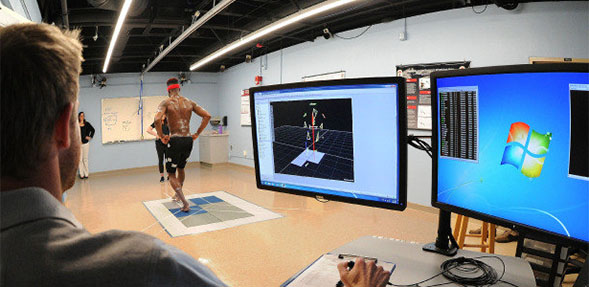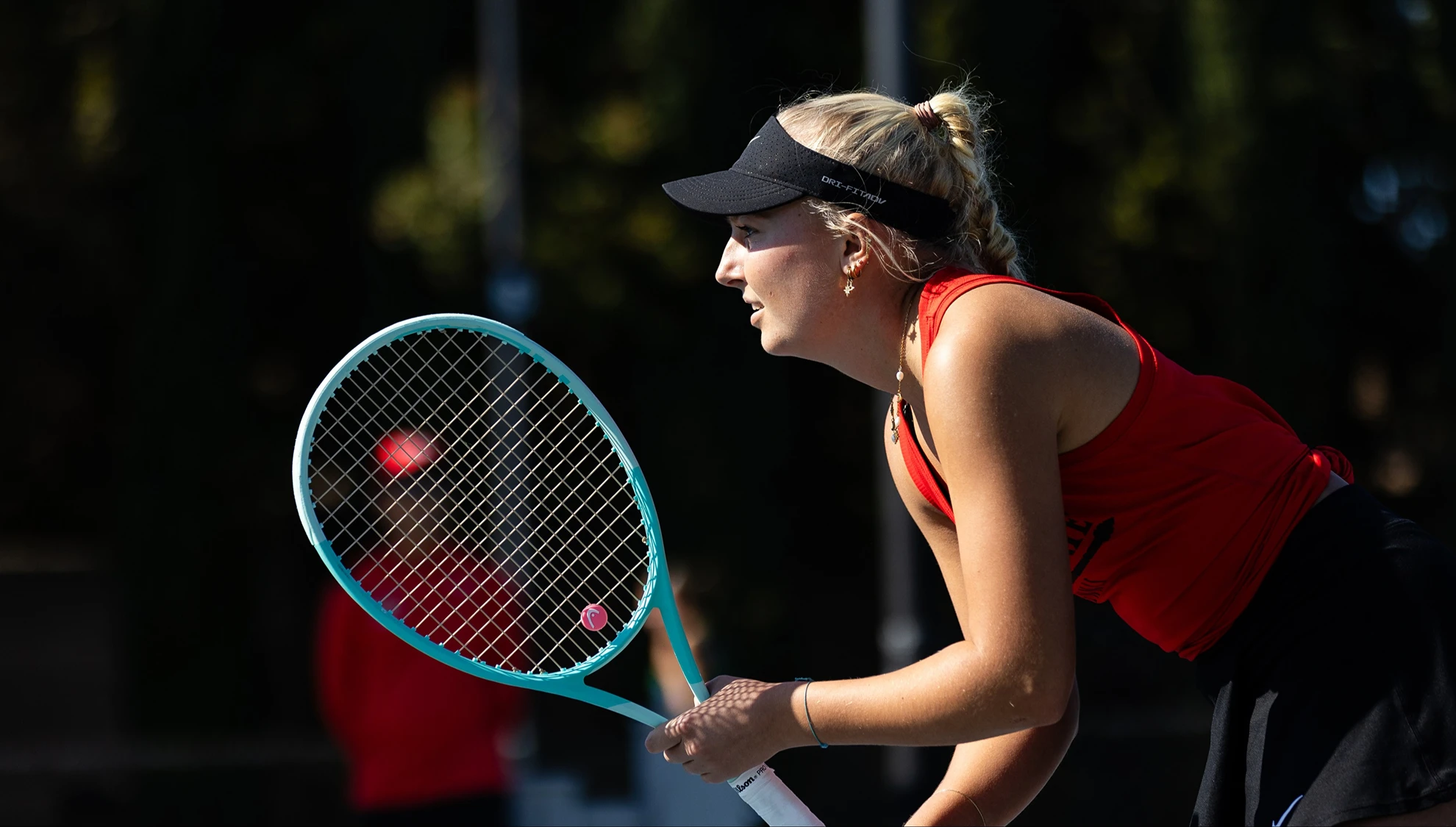New Testing has SDSU on Top of its Game
Thanks to a collaboration between academics and athletics, a rehabilitation biomechanics lab was hatched last spring at SDSU.

In a space that once served as the Peterson Gym concession stand, Zylan Cheatham, clad only in shorts and sneakers, looks infinitely more like The Six Million Dollar Man than San Diego State power forward.
Affixed to Cheatham's body are 75 reflective markers positioned to work in tandem with 16 infrared cameras. Part of a 3D motion capture system common to all video games, the cameras will catalog Cheatham's every move as he performs four sports-specific tasks measuring not only forces acting upon the body, but also serving to identify precursors to potential injury.
Over the course of the next 60 minutes, the cameras will generate more than 19,000 images of Cheatham's movements as he squats, hops, jumps and undergoes balance testing atop a series of five force plates, each costing approximately $15,000.
This is the science of sports biomechanics, or the physics of sports. A collaboration between academics and athletics, the idea to turn a former hot dog stand into a rehabilitation biomechanics lab was hatched last spring when Sara Gombatto, an assistant professor in the university's Doctor of Physical Therapy program, met with Tom Abdenour, SDSU’s head athletic trainer.
Clearly, Abdenour, who just completed his fifth season at SDSU, is in rare company. Having spent nearly 40 years mastering his craft, including 24 seasons in the NBA and as a member of the U.S. Olympic Team's medical staff in 2000, Abdenour's praises are sung loudly and often by Aztecs Coach Steve Fisher. A man who relies as much on evidence-based science as he does Epsom salts, he was once referred to as a "magician" by former SDSU player Garrett Green.
Yet when Gombatto, who has a Ph.D. in movement science, approached Abdenour last year about joining forces to enhance athletic performance and identify dysfunctions that could lead to injury, the result was the creation of a program involving research practices being utilized nowhere else in San Diego or the Mountain West.
"Tom and I started working together, because there is a lot of evidence in the (sports medicine) literature to support what kind of things can contribute to injury," Gambotto said. "What are the risk factors? But the problem is, it isn't often translated into practice.
"So I approached Tom and said, 'What do you say we start a program where we can start screening our athletes to compare their measures to those in the literature and see who's at risk, identify those people and then decide on maybe changing their strength and conditioning program or change things during their rehab? Then, when we do have an athlete who's injured, who's gone through rehab, let's test them and see what their measures are again and see if they're ready to return.'"
Exhibit A? Junior wing Matt Shrigley, who was one of the first two student-athletes to be tested by Gombatto and Abdenour last fall. Whereas even elite athletes can require eight months to return from reconstructive knee surgery, Shrigley, who underwent such a procedure after suffering a torn anterior cruciate ligament in his right knee in July, was back in five, making his first appearance against Utah State on Jan. 23. And while he did not score, much to the chagrin of those wanting the fairy tale to end in the usual fashion, Shrigley’s zero in the box score was nothing but a bonus in the eyes of Fisher.
“I love Matt Shrigley,” Fisher said. “From the moment he had the surgery, he was committed to whatever he had to do to get himself ready to play. We all feel sorry for ourselves, and I’m sure he did for a period of time after he found out he had the ACL injury. But he worked so hard."
Work done under the watchful eyes of Gombatto and Abdenour, who will retest Shrigley this fall. Others who will be closely monitored, Abdenour said, are transfers Max Hoetzel and Montaque "Teki" Gill-Caesar, both of whom have undergone knee surgeries in the past. Cheatham redshirted his freshman season after suffering a broken bone in his foot.
"We're in a gold mine here with our student-athletes and their aches and pains," Abdenour said. "We're just tapping into it so we can try and prevent (injuries)."
And not just injuries to men's basketball players. While sports biomechanics research and applications run the gamut from track and field to the trampoline, it's Gombatto's hope that the program will ultimately include the majority of SDSU student-athletes. Gombatto and Abdenour hope to have concluded initial testing of the entire men's basketball roster by the end of the week, at which point measurements of strengths and weaknesses can be relayed to strength and conditioning coach Randy Shelton.
"Our long-term vision is to expand this to our other teams," said Gombatto, the lab's co-director. "I think a lot of it depends on the individual trainer, as well as the strength and conditioning coaches and the players. I think it's really important that we're all going over this together, with each individual giving their own perspective.
"There aren't a lot of people who are trying to do this. Most of the time people stay on the research side or stay on the clinical side, because it's hard. You have to have willing and able collaborators to pull something like this off. Tom's expertise is invaluable. As soon as I approached him about doing this, he knew exactly what I was talking about and what I wanted to do. He doesn't know about biomechanics analysis, but he knows how to relate the information to the kids and to the surgeons and he knows where a particular player fits into the team. He knows their (physical) history, as well.
"Tom and I really wanted to do something that was general enough to cover a variety of lower-extremity injuries like an ACL tear, patellar tendinitis, chronic ankle instability, hip injuries and the spine. Tom has been on the cutting edge. He's doing the standardized testing that's in the (sports medicine) literature. He's doing everything he can with the tools that are available to him. Now that we've added those tools to the biomechanics expertise that I have, we can enhance what Tom has already been doing."
Even if it never culminates in a certain San Diego State power being transformed into The Six Million Dollar Man.
"I have a little different way of watching the team play during the season, because I'm watching their movements and body mechanics," Gombatto said. "I'm watching as a biomechanist, but I'm also watching as a fan. It's hard to separate the two."
No harder, apparently, than turning a hot dog stand into a vision of the future.



